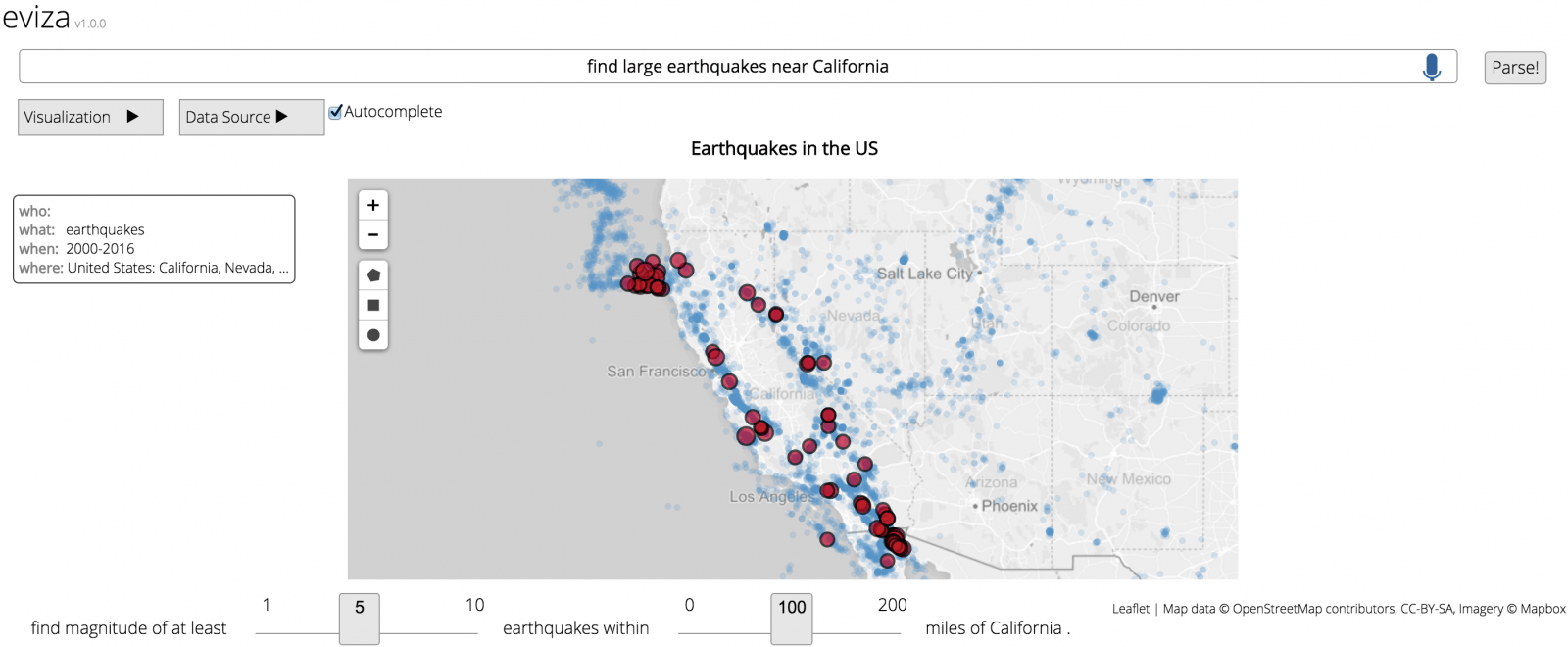Eviza: A Natural Language Interface for Visual Analysis
ACM User Interfaces and Software Technology (UIST) 2016
Eviza’s interface showing a map of earthquake data in the United States. The interface supports natural language analytical questions in the context of a visualization. Here, the map shows marks selected in response to the user’s query “find large earthquakes near California.” The system semantically associates the sized descriptor ‘large’ to an attribute in the dataset called ‘magnitude’ that can be associated with size. Eviza finds two ambiguities in the query: ‘large’ and ‘near,’ which are fuzzy terms for size and distance. The system sets ‘large’ to be of magnitude 5 and greater, while ‘near’ is a 100 mile radius around the border of California. Two ambiguity widgets are added to the interface to allow the user to modify these settings.
Natural language interfaces for visualizations have emerged as a promising new way of interacting with data and performing analytics. Many of these systems have fundamental limitations. Most return minimally interactive visualizations in response to queries and often require experts to perform modeling for a set of predicted user queries before the systems are effective. Eviza provides a natural language interface for an interactive query dialog with an existing visualization rather than starting from a blank sheet and ask- ing closed-ended questions that return a single text answer or static visualization. The system employs a probabilistic grammar based approach with predefined rules that are dynamically updated based on the data from the visualization, as opposed to computationally intensive deep learning or knowledge based approaches. The result of an interaction is a change to the view (e.g., filtering, navigation, selection) providing graphical answers and ambiguity widgets to handle ambiguous queries and system defaults. There is also rich domain awareness of time, space, and quantitative reason- ing built in, and linking into existing knowledge bases for additional semantics. Eviza also supports pragmatics and exploring multi-modal interactions to help enhance the expressiveness of how users can ask questions about their data during the flow of visual analysis.
Tableau 작성자
Vidya Setlur, Sarah Battersby, Melanie Tory, Rich Gossweiler
작성자
Angel X. Chang
보충 정보
